Warren Feeney – 22 September, 2017
'Afternoon Delight' is also a wall painting that seems to rise towards the ceiling, declaring its pleasure in its very presence, a jubilant announcement grounded in a deliberate urban aesthetic. This is evident in the largesse of its letter shapes, and the inscription of colour across the gallery wall as Campbell's paint-laden brush verges closer to running dry.
Jon Campbell’s exhibition at the Ilam Campus Gallery, Afternoon Delight delivers on the optimism of its title, possessing an unanticipated and comprehensive sincerity. And if the titles of the Melbourne-based artist and musician’s works in the exhibition catalogue look overly familiar, (popular vernacular sound-bites from middle-class suburban youths), assumptions about the predictability of their sentiment vanish at the moment of entering the gallery.
‘It’s a world full of lying bastards,’ ‘Hair of the dog,’ and ‘Same old bullshit,’ have never looked or sounded so affirmative, collective thoughts and principles that surprisingly, made perfectly joyful common sense .
Afternoon Delight is my first experience of Campbell’s paintings, but apparently words have been central to his art for more than 25 years. Yet, although text as a means of representing an artist’s ideas in contemporary art have played a significant role since the mid-1960s, it is difficult to connect Campbell’s work immediately to any of his predecessors or contemporaries. I would maintain that this is possibly due to the all-inclusive nature of his arts practice as both musician and painter.
As a top-of-the-pops hit from the mid-1970s, The Starland Vocal Band‘s one hit wonder, Afternoon Delight, attracts immediate consideration of Campbell’s relationship with popular music. The way in which the messages of such songs, as simple and direct as they may appear, connect with the everyday realities of our lives, assuming subtle and abundant meanings beyond their initial manifestation.
It is Campbell’s given faith in the potency of this vernacular that distinguishes his use of words and demarcates his distance from artists like Kay Rosen, Imants Tillers, Janet Burchill, Billy Apple or Julian Dashper. The differences are important. Although, like Campbell, there is an element in (for example) Rosen‘s work of text being fashioned as a concrete poem; her works are burdened by a seriousness and self-awareness of their cleverness, evident and announced to audiences from the moment of their first encounter.
Campbell, however, comes across as an artist who is also a devoted fan of the music, culture and communities represented by his art. Afternoon Delight looks like the work of a perceptive and insightful bona fide aesthetic slacker, fine tuning popular phrases and animating new life into them by making a fuss about the form, colour, spacing and shaping of words and letters.
The words ‘Fuck Yeah’ have never looked so aspirational or undeniably sincere as they do in Afternoon Delight. Campbell’s consideration of them in Fuck Yeah—contained and framed within an aerial maze of hand-made geometric shapes in whites, translucent blues, reds and blacks—are defined and executed within a pseudo Cubist-space that perpetually oscillates with promises and possibilities.
In other wall works, the immediate associations between the text and traditions of concrete poetry are apparent, yet also put to rest by the assertion of, and attention to, colour and gesture as evidence of the artist’s hand plying paint to the gallery’s walls.
Afternoon Delight is also a wall painting that seems to rise towards the ceiling, declaring its pleasure in its very presence, a jubilant announcement grounded in a deliberate urban aesthetic. This is evident in the largesse of its letter shapes, and the inscription of colour across the gallery wall as Campbell’s paint-laden brush verges closer to running dry.
Accompanying Afternoon Delight is an artist’s book designed by Aaron Beehre and published by Ilam Press: It’s a World full of Cover Versions. Launched at the exhibition opening, at 30 x 41cm in size, the bound 20 painted text cards complement and differentiate themselves from the experience of the exhibition.
By including some of the phrases on the gallery’s walls—‘Kebabs,’ ‘No Problemo,’ and ‘Afternoon Delight’—in the Ilam publication these expressions become more direct, intimate and personal. In It’s a World full of Cover Versions, effervescent and fluorescent colours shape and define phrases like RELAX, NAH, I’VE LOST MY TOOL BAR, and TALL POPPIES. Its painterliness aims at raising the pulse rate of the reader. This sensory experience, with its evocation of sound, underlines the unique nature of this book: the shapes of its letters, the loudness and complexity of its messages and the surprise and pleasurable anticipation of turning its pages.
Both exhibition and publication reveal an awareness of the merits of sharing territories, realising and integrating intentions of varying arts practices. Over the past 18 months this notion of a seamless relationship between disciplines has provided the most perplexing and interesting of gallery experiences for this reviewer: shows by Julia Holderness, Jacquelyn Greenbank, Moniek Schrijer and Aaron Beehre all immediately come to mind. Campbell’s and Ilam Press’ respectful repositioning of the experiential consumption and contemplation of painting within the covers of a book, seems no less promising or exciting.
Warren Feeney
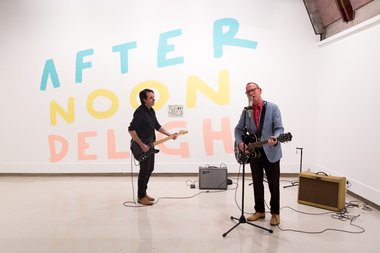
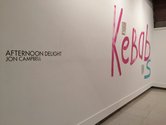
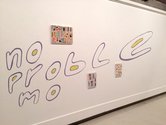
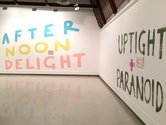
 Advertising in this column
Advertising in this column Two Rooms presents a program of residencies and projects
Two Rooms presents a program of residencies and projects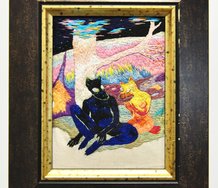
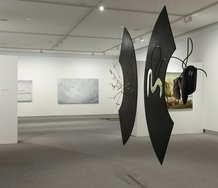
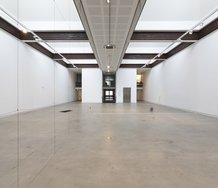

This Discussion has 0 comments.
Comment
Participate
Register to Participate.
Sign in
Sign in to an existing account.